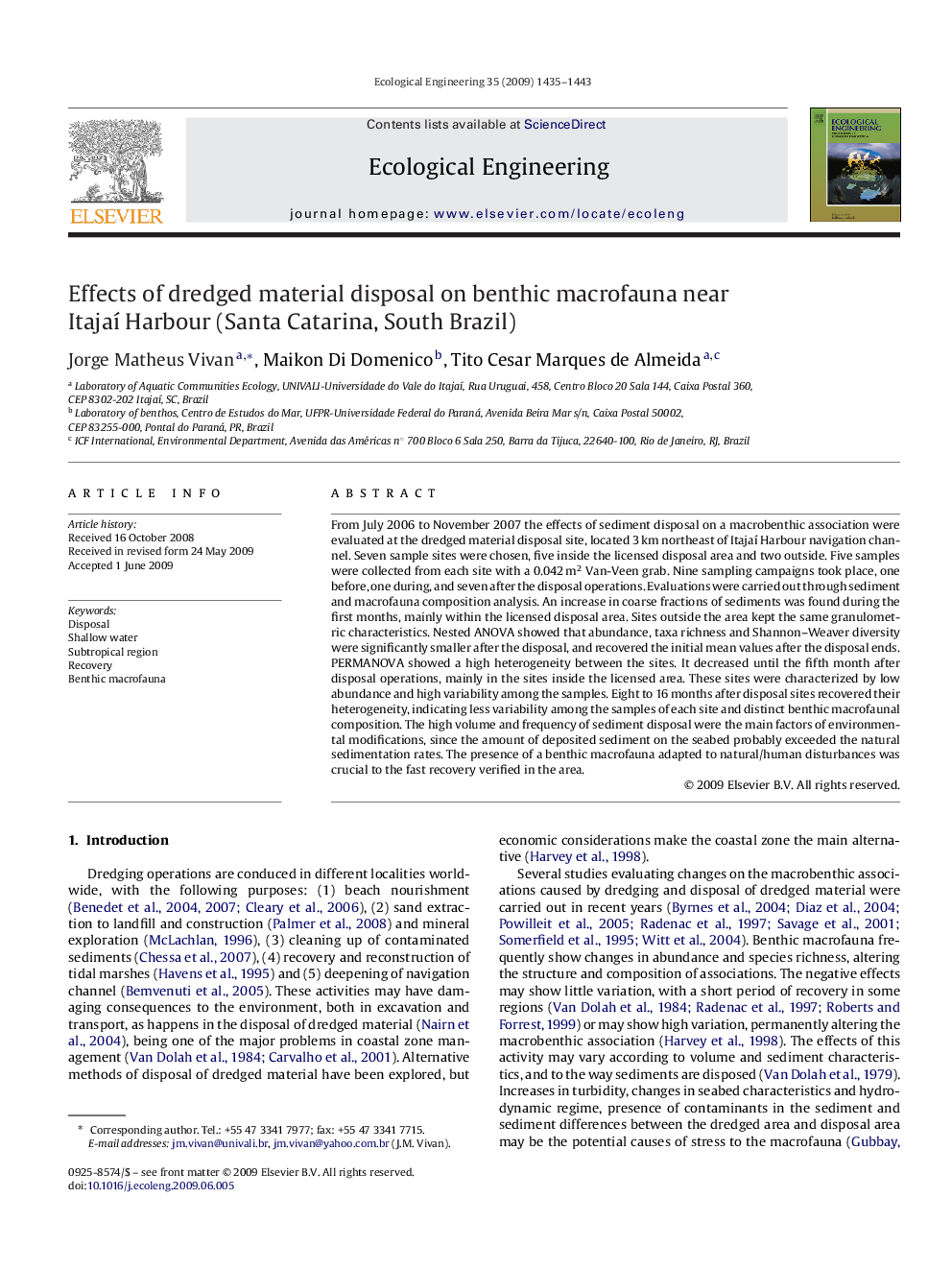| Article ID | Journal | Published Year | Pages | File Type |
|---|---|---|---|---|
| 4390720 | Ecological Engineering | 2009 | 9 Pages |
Abstract
From July 2006 to November 2007 the effects of sediment disposal on a macrobenthic association were evaluated at the dredged material disposal site, located 3 km northeast of Itajaà Harbour navigation channel. Seven sample sites were chosen, five inside the licensed disposal area and two outside. Five samples were collected from each site with a 0.042 m2 Van-Veen grab. Nine sampling campaigns took place, one before, one during, and seven after the disposal operations. Evaluations were carried out through sediment and macrofauna composition analysis. An increase in coarse fractions of sediments was found during the first months, mainly within the licensed disposal area. Sites outside the area kept the same granulometric characteristics. Nested ANOVA showed that abundance, taxa richness and Shannon-Weaver diversity were significantly smaller after the disposal, and recovered the initial mean values after the disposal ends. PERMANOVA showed a high heterogeneity between the sites. It decreased until the fifth month after disposal operations, mainly in the sites inside the licensed area. These sites were characterized by low abundance and high variability among the samples. Eight to 16 months after disposal sites recovered their heterogeneity, indicating less variability among the samples of each site and distinct benthic macrofaunal composition. The high volume and frequency of sediment disposal were the main factors of environmental modifications, since the amount of deposited sediment on the seabed probably exceeded the natural sedimentation rates. The presence of a benthic macrofauna adapted to natural/human disturbances was crucial to the fast recovery verified in the area.
Related Topics
Life Sciences
Agricultural and Biological Sciences
Ecology, Evolution, Behavior and Systematics
Authors
Jorge Matheus Vivan, Maikon Di Domenico, Tito Cesar Marques de Almeida,
